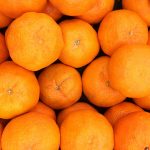
Both our “Dairy cattle farming” and “Dairy processing” pages were updated at the end of September with information from the Milk Producers Organisation (MPO) biannual Lacto Data. We wanted to share some points of interest on South Africa’s dairy sector.
Dairy production goes up but from fewer producers
Since we began compiling our agricultural publication a decade and a half ago we have watched the number of dairy farmers DROP! And Lacto Data records a 57% decrease since January 2011, when there were 2 686 dairy operations, to January 2020 when there were 1 164. Interestingly, the volumes of milk produced have increased.
Dairy farming is moving to coastal provinces
Limpopo records the largest percentage drop in dairy farmers which is in line with the trend of dairy operations increasingly being found in the coastal regions. This is less about cows being aspirant Stormers, Sharks and Bush Bucks supporters than higher production being possible from the pasture-based operations here. The Western Cape, KwaZulu-Natal and the Eastern Cape have the highest number of dairy farmers.
Dairy processor numbers are also dropping
The South African secondary dairy industry is made up of (i) large processors who operate nationally, (ii) smaller processors who operate in specific areas, and (iii) producer distributors (PDs), milk producers who sell their own produce to retailers and consumers. The numbers here have also been dropping. The first two categories decreased by 30% from January 2009 to March 2020, and PD numbers dropped by 60% over the same period.
Gauteng is the top milk processing province
The smallest province in South Africa has the highest numbers of milk processors and PDs, 39 and 15 respectively (the Western Cape has 33 and 12). This is obviously a case of being closer to your market, Gauteng having the highest population figures.
SA imports more dairy products than it exports
South Africa imported 75 600 tonnes and exported 45 100 tonnes of dairy products in 2019. Imports were mostly whey (29%), milk powder (24%) and milk and cream (24%). Exports were mostly milk and cream (45%), and butter and yoghurt (24%). The top exporters are the EU, New Zealand and Australia.
Internationally, growth in the dairy industry is not led by the traditional countries
Lacto Data notes that for the second year in a row, it has been Asia and other emerging dairy regions that cause an increase of global milk production. Milk production in the EU, Oceania and the US was “unimpressive”.
Buffalo and goat’s milk taking off!
On a global note, another point of interest is that buffalo milk and goat’s milk have a much higher growth rate than cow’s milk. This points to a growing market for milk from other animals.
Photo by cottonbro from Pexels.
Relevant pages on the AgribookDigital website include:







